Today in Irish History: The Headford ambush, March 21, 1921.
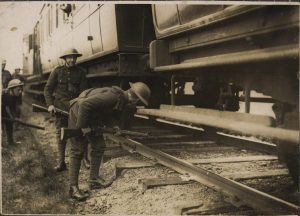
Thomas Earls Fitzgerald on a bloody action in Kerry during the Irish War of Independence.
On the 21st March 1921, the most successful I.R.A. ambush in county Kerry occurred at Headford junction in the south of the County. Headford, now an abandoned railway station, in 1921 connected Kenmare with Killarney and also was on the major line that connected Cork with Kerry.
A column from the Second Kerry Brigade of the IRA raked a train carrying British troops with bullets and grenades and by the time the firing had stopped, at least thirteen people on all sides lay dead at the scene.
Kerry 2 Brigade attacked a troop train, leaving at least 13 dead on all sides.
The ambush was, quite possibly, the largest single engagement between the I.R.A. and the regular British army in the War of Independence.
Ambushes
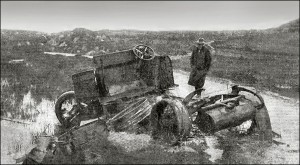
Ambushes were an important tactic of the I.R.A. in the War of Independence. Most notably Kilmichael in west Cork, Clonbanin in north Cork, Dromkeen in Limerick, Rineen in Clare, Tourmakeady in Mayo, Soloheadbeag in Tipperary and others such as Scramogue in Roscommon.
Research into the War of Independence since in the 1990s has undermined the traditional narrative that focused on ambushes; modern research has highlighted how I.R.A. operations were just as, if not more, likely to involve in individual assassinations, impeding the movements of the Crown forces and the intimidation of civilians perceived to be opponents, as ambushes.
While ambushes did not define the Irish War of Independence as once thought, they were important markers of a local IRA unit’s capabilities.
A successful ambush did however act as a major moral boost for an I.R.A. unit and was usually a source of much needed weaponry. They also helped to legitimise the I.R.A. as an effective guerrilla army and perhaps most importantly, exposed the Crown forces as being vulnerable. A successful I.R.A. ambush could also lower the moral of the Crown forces.
All the more proactive I.R.A. units in the country all wanted to have organised at least one successful ambush – indeed, much of the military history of the war of independence involves countless unsuccessful ambushes, as the Crown forces would often stubbornly refuse to show up.
The war in Kerry
(See also The War of Independence in Kerry)
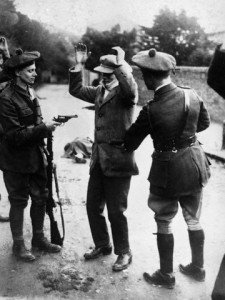
Prior to the Headford ambush, by the spring of 1921, the Crown forces believed that they had the upper hand in the county. The Kerry County Inspector of the Royal Irish Constabulary maintained that the I.R.A. had lost much of their fighting capabilities, and that they would never ‘regain the hold they had on the popular imagination’ and the police were now capable of travelling wherever they wanted in the County.[1]
The Crown forces felt much of this was due to their aggressive reprisal campaign that they believed undermined I.R.A. morale and made them less willing to engage in acts of lethal violence.
November 1920 had seen the most extensive and brutal reprisals by the Crown forces in Kerry with the ‘siege’ of Tralee and a number of other reprisals across the county. The County Inspector announced
As a result of the…action taken, following on the murders on 31st October…an improvement has been affected in the attitude of the general body of the people and the number of those willing to engage in outrage has reduced.[2]
The events of 1921 was to prove that this assessment was false. I.R.A. activity increased across the country, at unprecedented levels. The IRA in Kerry was galvanised with the arrival of organiser Andy Cooney from the guerrilla army’s headquarters in Dublin. Cooney was a medical student from Tipperary, who became a full time activist for G.H.Q. in 1921 and was sent to Kerry by G.H.Q. ‘to organise greater resistance to the British’ there.[3]
The Kerry IRA
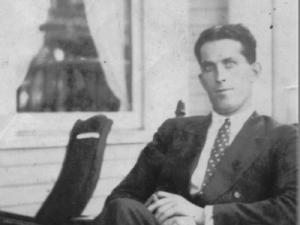
The Kerry I.R.A. never had a comfortable relationship with Dublin based G.H.Q. G.H.Q disliked the Kerry No.1 Brigade O/C Paddy Cahill, as they felt the units under his command, in north and west Kerry, had not kept up with the ‘pace’ of the conflict.[4].
While the I.R.A. in the Kerry No.1 area did have a significant organisational structure and prowess, the Kerry I.R.A. No.2 Brigade – around Killarney and Castleisland – did not have the same organisational strength and had not conducted any major operations. Cooney’s first task was to get the Kerry No.2 Brigade into some kind of shape and to form a flying column in the Kerry No.2 area.[5]
In February Cooney brought together Volunteers from Killarney and south and east Kerry in a training course at the Gap of Dunloe, these men would go on to form the column responsible for the Headford ambush. The volunteers were instructed in the use of rifles, grenades and the laying of mines.[6]
Andy Cooney was sent from IRA GHQ in Dublin to re-organise the IRA guerrillas in Kerry.
Dan Allman was appointed O/C of the Column with Tom McEllistrim as vice O/C[7]; a rather curious decision considering that McEllistrim had more experience than Allman, and the column contained other more experienced men, associated with McEllistrim, like Johnny O’Connor, Peter Browne and John Cronin.[8]
These men had been involved in attacks on the Crown forces going back to 1918 and had formed their own flying column around Ballmacelligott in mid 1920 but had effectively renounced the authority of brigade commander Paddy Cahill. Perhaps the issue of localism arises. These men were all, technically, mutineers from Kerry No.1 and perhaps the south Kerry men refused to be led by people they associated with Tralee. McEllistrim, in his Bureau of Military History statement though, maintained that the column was jointly commanded by him and Allman.[9]
McEllistrim’s and Allman’s first major operation occurred not in Kerry but in north Cork. On 5th March, a combined north Cork brigade, Cork No.2, column under Séan Moylan with the fledgling Kerry No.2 column, ambushed two British army Lorries at Clonbanin, in a protracted and bitter fight. The I.R.A. were not able to overcome a British machine gun placed on one of the Lorries but managed to retreat in good order.
The major outcome of the ambush was the death of Brigadier General Cummins, commander of British troops in Kerry. I.R.A. Chief of Staff Richard Mulcahy was impressed with the action and wrote to Brigade O/C of Kerry No.2 Humphry Murphy ‘I hope that now that Kerry No.2 is definitely beginning to throw itself properly into the war, that no opportunity, however, small will be lost to show that Kerry is not going to be behind any other Brigade in a matter of initiative and in the matter of ability to strike a blow’.[10]
Ambush at Headford
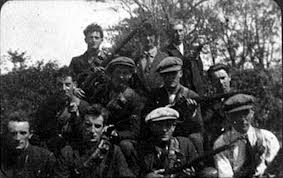
In just over two weeks Mulcahy’s hopes were realised as the Kerry No.2 column again displayed their fighting ability, this time in their own area. In late March I.R.A. intelligence learned that a detachment of troops from Tralee had been active in the Kenmare area but were due to return to Tralee via rail and would be switching trains at Headford junction on the 21st March
The column hoped to wipe out all the British troops before the second train arrived. The first train was due at Headford at 4.00 pm, and the column approached the station coming up to the hour.
The train from Mallow to Tralee contained a detachment of Royal Lancashire Fusiliers but also civilians coming from a fair in Kenmare.
They were just taking up positions when they discovered that the train was in fact due to arrive at 3.50, ten minutes before schedule. A certain confusion persisted as to what positions to occupy. Allman, with Jim Coffey took cover in the lavatory, on the western side of the station, and McEllistrim established his H.Q. in the stationmaster’s house. The rest of the column was divided in two; with Johnny O’Connor’s section on the northern Killarney side on an embankment looking over the station, and another section under Peter Browne on the southern Kenmare side of the station, McEllistrim’s H.Q was also on the southern side.
A detachment of the 1st London Royal Fusiliers detrained expecting to continue their journey to Tralee on a train coming from Mallow. Civilians, mainly farmers and livestock merchants, coming from a fair in Kenmare also disembarked. A British soldier needing to relieve himself went to the lavatory and was shot dead by Allman, Coffey apparently attempted to disarm him first.
On hearing the shot the other I.R.A. sections opened fire. An intense fusillade began and the commander of the British troops Lieutenant C.F. Adams was killed in the initial moments, as were most of the other British fatalities. In a chaotic scene, British troops and civilians rushed for cover. After recovering from the shock, and still under heavy fire, the British troops on the platform took cover beneath the train itself.
A problem now posed itself for both the British and the I.R.A. – beneath the train and blocked by the platform the British could not effectively see their opponents or lay down a steady base of fire, instead being reduced to intermittent and effective sniping. A Vickers machine gun was also mounted on the train itself, but the gun failed to work.
Most of the British casualties were inflicted in the initial IRA volley. After that, British troops took shelter under the train.
O’Connor’s section, similarly, found it hard to find a clear line of fire as their opponents were now well concealed beneath the train and had the extra protection of the raised platform itself. Allman left the lavatory to reconnoitre with the section of the column on the Killarney side of the embankment and find a better position from which to fire on the train, but was shot dead by a sniper in the process.
Johnny O’Connor managed to throw a mills bomb amidst the troops under the train and Jim Baily, another Volunteer in O’Connor’s section, was shot dead whilst in the act of throwing another Mills bomb. McEllistrim reported that his group in the stationmaster’s house were also throwing grenades. The fighting went on for just under an hour.
According to McEllistrim, the British troops were called upon to surrender but refused, and he accordingly had hoped to rush the remaining troops under the train. However, before he could attack the surviving soldiers, British reinforcements appeared from Mallow. The early arrival of the second train with another party of military caused all sections of the I.R.A. flying column to withdraw, in good order, towards the river Flesk and then onto the Paps Mountains, under heavy fire from the reinforcements.[11]
It could be argued that the I.R.A. should have made preparations for the early arrival of the train by arriving at the station sooner and not having to rush their deployments. However, once the engagement began both sides displayed considerable ingenuity – the British in terms of their creative use of a covering position, in the form of the train, together with sniping, while the I.R.A. by occupying positions on both sides of the train prevented the British from retreating from the scene.
If the second train with reinforcements had come later McEllistrim’s plan to rush the troops under the train could have proven successful, but probably would have resulted in a bloodbath and another Kilmichael situation, in which the British force was wiped out.
The number of British troops killed has always been a source of dispute. Kerry’s fighting story 1916-21, published in 1947, claimed a total of twenty four British troops were killed. [12] The British Army however reported to their superiors that nine soldiers were killed (seven on the spot and two died shortly after) and 12 were wounded.[13]
Aftermath
Headford was successful in terms of the I.R.A. engaging the British and withdrawing in good order but it was at a tragic cost. John Breen, a cattle dealer from Killarney, was found dead in the station’s waiting room, Patrick O’Donoghue, also of Killarney and a cattle dealer, died of his wounds. He was shot in the abdomen while in the train.
As well as at least 9 British soldiers, two civilians and two IRA Volunteers were killed.
Another man Timothy McCarthy, a merchant from Loo Bridge, was shot in the foot, his three year old daughter was also wounded. MacCarthy was walking from the train to the waiting room when the fusillade began, he picked up his daughter and dashed for the waiting room but both were hit and wounded. The little girl was injured in both legs.[14]
Andy Cooney, though not present at the fight, was delighted and as he had good news for headquarters. He did recall that after that ‘ I had considerable difficulty in convincing the Chief of Staff that it was this ( South Kerry) flying column and not a Cork one’ which had carried out the ambush.[15] Mulcahy was, apparently, delighted with the ambush and wrote to Humphry Murphy;
I want you to convey especially all the men who were engaged in this fight our very great appreciation of the soldierly spirit in which this very fine piece of work was carried and through and to convey to the officers and men of the brigade as a whole our congratulations that the fighting material in the brigade promised to be so very fine’.[16]
The Kerry No.1 Brigade also became worthy of praise. In the spring of 1921, the much criticised, Paddy Cahill also brought his column into the conflict in a major way. Since November Cahill had formed a column and had been operating on the eastern side of the Dingle Peninsula. Mulcahy ruefully recalled that ‘Paddy took his column up Slieve Mis and stayed there’.[17] G.H.Q. assessment of Cahill’s column was that they were primarily devoted to ‘eating, sleeping and general amusement’.[18]
The very next day after Headford though this ‘sleeping’ column were engaged in an operation that also showed significant military capability. On 22nd March a nine man R.I.C patrol was ambushed at Lispole on the Dingle Peninsula between Annascual and Dingle Town, in a protracted fight lasting three hours. The R.I.C. aware of the I.R.A.’s dispositions attempted to flank their opponents.
The I.R.A. column comprised of Paddy Cahill’s column and I.R.A. men from Lispole, Castlegregory and Annascual, led by Tadhg Brosnan of Castlegregory, managed to retreat in good order whilst keeping up a steady line of fire. Volunteers Tim Hawley, James Fitzgerald and Thomas Ashe were all hit and died of their wounds, three R.I.C men were also wounded.[19]
Towards the end of March G.H.Q. declared that Munster could be considered ‘The War Zone’ and ‘properly speaking this embraces the counties of Kerry, Limerick, Cork and Tipperary…This zone is on all grounds entitled to supplies of all kinds and must be kept munitioned as fully as possible’.[20] The ambushes at Headford and Lispole, no doubt, played a role in Kerry becoming part of the war zone.
The conflict would continue for nearly another four months and see more successful ambushes for the I.R.A. in Kerry at Rathmore and at Castlemaine.
Kerry’s role in the War of Independence would forever be overshadowed by the brutality and atrocities the county experienced in the subsequent civil war. Events like Headford, did however, shows the fighting capabilities of the Kerry I.R.A. and that the criticisms levelled at the pre-civil war Kerry I.R.A. from Cork’s Tom Barry, Liam Lynch, and G.H.Q. staff men Eoin O’Duffy and Richard Mulcahy, were by no means warranted.
References
[1] Royal Irish Constabulary, County Inspector’s Monthly report for January 1921, County of Kerry, CO 904/114.
[2] C.I., M.R., November 1920, County of Kerry, CO 904/113.
[3] Michael MacEvilly, A splendid resistance. The life of IRA Chief of Staff Dr. Andy Cooney (Dublin, 2011), p.37
[4] Chief of Staff to O/C Kerry No.1 Brigade, 18th May 1921, P7/A/28.
[5] MacEvilly, A splendid resistance, pp. 39-40.
[6] Thomas McEllistrim, B.M.H., W.S., 882.
[7] MacEvilly, A splendid resistance, p. 40.
[8] Dywer, Tans, terror and troubles, p. 289.
[9] Tom McEllstrim, B.M.H., W.S., 882.
[10] C/S to O/C Kerry No.2, 21st March 1921, P7/A/38.
[11] This account of the ambush was constructed from the following sources See Tom McEllstrim, B.M.H., W.S., 882., Peter Browne, B.M.H., W.S., 1110, John O’Connor, B.M.H., W.S., 1181, Ernie O’Malley, The men will talk to me. Kerry interviews by Ernie O’Malley, edited by Cormac O’Malley and Tim Horgan ( Cork, 2012) John O’Connor interview pp 215-219 and Tom McEllistrim interview pp 202-203, Dwyer, Tans, Terror and troubles, 289 -294, Kerry’s fighting story 1916-21. Told by the men who made it (Tralee, 1947), p. 255 -259 and Tim Horgan, Dying for the cause. Kerry’s republican dead ( Cork, 2015), pp. 237-239, 281-283
[12] Kerry’s fighting story 1916-21, p. 259.
[13] T Ryle Dwer, Tans Terror and Troubles, Kerry’s Real Fighting Story 1913-1923, p294-295. (Cork 2001).
[14] The Kerryman, 26th March 1921.
[15] MacEvilly, A splendid resistance, p.42.
[16] C/S to O/C Kerry No.2 Brigade, 16th April 1921, P7/A/38.
[17] Tim Pat Coogan, Michael Collins. A biography (London, 1990), p. 206.
[18] Charles Townshend, The Republic. The fight for Irish independence 1918-1923 (London, 2013), p. 295.
[19] Weekly Report, Week ended 27th March 1921, also the number of similar outrages reported during the week ended 20th March 1921, CO 904/150, see also Horgan, Dying for the cause, pp. 54-56, 131-132, 137-138.
[20] G.H.Q. Staff memo. The war as a whole, 24th March 1921, P7/A/17.